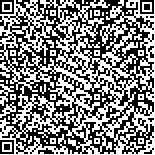| 摘要: |
| [摘要] 目的 了解医院感染现患率的变化趋势,分析医院感染相关影响因素,为制定有效的医院感染预防与控制措施提供科学依据。方法 采用横断面调查方法,对2013~2018年各年份某调查日该院所有住院患者进行医院感染现患率调查。结果 该院2013~2018年各年份医院感染现患率分别为3.16%、2.60%、3.80%、2.87%、3.12%和2.59%,无明显下降趋势(趋势χ2=0.456,P=0.499)。医院感染现患率最高的科室为重症一区(21.18%),医院感染部位主要为下呼吸道(38.20%)。历年抗菌药物使用率为30.30%~33.78%,差异无统计学意义(χ2=6.823,P=0.234)。治疗及治疗+预防用药病原学送检率为72.07%。多因素分析结果显示年龄(≥65岁)(OR=1.401,95%CI:1.098~1.788)、使用呼吸机(OR=3.533,95%CI:2.336~5.344)、动静脉插管(OR=2.786,95%CI:2.116~3.668)及手术(OR=3.555,95%CI:2.837~4.455)是医院感染发生的独立危险因素。结论 该院近6年医院感染现患率无明显下降趋势,但均维持在较低水平,医院感染控制情况总体良好。应加强对重症医学科、神经外科及心胸外科等科室和高风险人群的目标性监测,针对性地制定医院感染控制措施,降低医院感染发生率。 |
| 关键词: 医院感染 现患率 感染部位 抗菌药物 危险因素 |
| DOI:10.3969/j.issn.1674-3806.2020.03.16 |
| 分类号:R 181.3+2 |
| 基金项目: |
|
| Investigation on the prevalence rate of nosocomial infection in a tertiary first-class general hospital from 2013 to 2018 and analysis of its influencing factors |
|
FAN Xue-jiao, LI Yuan-hui, XIE Pei-yan, et al.
|
|
Department of Nosocomial Infection Control, the People′s Hospital of Guangxi Zhuang Autonomous Region, Nanning 530021, China
|
| Abstract: |
| [Abstract] Objective To investigate the changing trend of prevalence rate of nosocomial infection and analyze its related factors to provide scientific basis for effective prevention and control of nosocomial infection. Methods Cross-sectional survey method was used to investigate the prevalence rate of nosocomial infection among all the inpatients in a tertiary general hospital on a survey date during 2013 and 2018 year by year. Results The prevalence rate of nosocomial infection during 2013 and 2018 year by year was 3.16%, 2.60%, 3.80%, 2.87%, 3.12% and 2.59% respectively, with no significant downward trend and no statistically significant difference in the trend of changes(χ2=0.456, P=0.499). The department with the highest incidence of nosocomial infection was the First Department of Critical Care Medicine(21.18%) and the main site of nosocomial infection was the lower respiratory tract(38.20%). The usage rate of antibacterial agents varied from 30.30% to 33.78% year by year during 2013 and 2018, and the difference of annualized rates was not statistically significant among the 6 years(χ2=6.823, P=0.234). The bacteria examination rate in the patients receiving therapeutic and therapeutic+prophylactic antibacterial agents was 72.07%. The results of multivariate analysis showed that age(≥ 65 years old)(OR=1.401, 95%CI: 1.098~1.788), use of ventilator(OR=3.533, 95%CI: 2.336~5.344), arteriovenous catheterization(OR=2.786, 95%CI: 2.116~3.668) and surgery(OR=3.555, 95%CI:2.837~4.455) were the independent risk factors of nosocomial infection. Conclusion The prevalence rates of nosocomial infection in the hospital in the past six years show no significant trend of decline, but remain at a low level, and the overall situation of nosocomial infection control is good. It is necessary to strengthen the targeted monitoring of the Departments of Critical Care Medicine, the Department of Neurosurgery, Cardiothoracic Surgery and high-risk population, and formulate the control measures of hospital infection to reduce the incidence of hospital infection. |
| Key words: Nosocomial infection Prevalence rate Infection site Antibacterial agents Risk factors |

